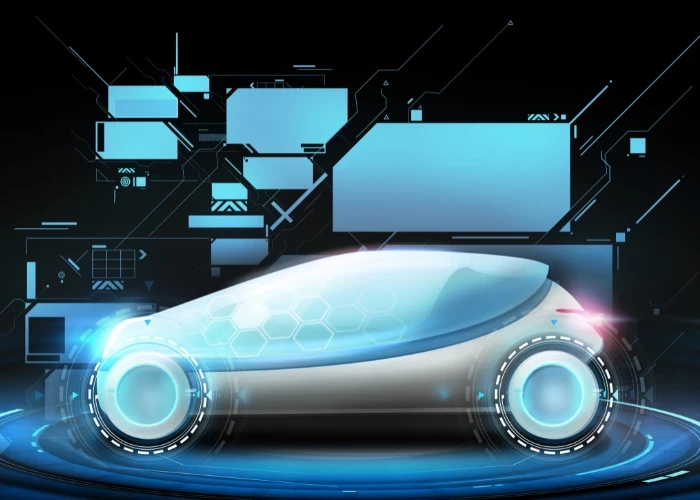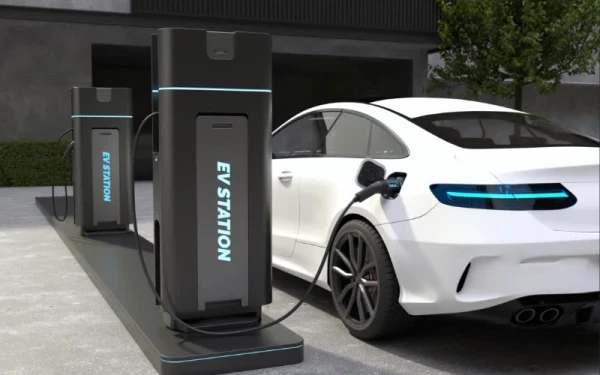Getting a better view – augmented reality in cars
Add bookmarkThis year, the Consumer Electronics Show (CES) has proven once again that car display systems in the future will not be limited to showing us information on the dashboard, but will rather focus on keeping our view on the road ahead with the help of HUDs and full-windshield augmented reality (AR) systems. Some of them are even already on schedule for a broad release.
Apple CEO Tim Cook’s excitement for AR systems shows how big of a topic they are at the moment. He thinks the technology will have a bigger impact on the consumer market than virtual reality, as it allows for the blending of real world objects with virtual information without eliminating real world input altogether. Imagine showing a virtual prototype design to your colleagues, being able to manipulate it in the real world and giving their feedback directly back to you. While this can also be done in VR, it is a much less organic experience, since, of course, you would “block out” the real world.
While this can also be done in VR, it is a much less organic experience, since, of course, you would “block out” the real world.
The applications for automotive
While driving, of course, you want to avoid showing fancy or overwhelming information to the driver that might distract him. The car, truck, or bus should only provide information that helps with its safe operation. So far, drivers mostly had to rely on looking at the real world and dashboard instruments to learn about what is going on around them.
Dashboard controls also have you take your eyes off the road, driving “blind” for at least half a second. At 120 km/h, that translates to a distance of 33 meters. Clearly, car makers know that there is a possibility to improve safety by displaying information in a less distracting way. BMW, Mercedes-Benz, Audi, Cadillac, Ford, and others have already implemented head-up displays, but so far, they only cover a small part of the windshield.
The windshield as an info screen
New and future systems will be able to display more information in a more supportive way than was possible before. Automotive supplier Continental has partnered with DigiLens – known for their work on AR glasses - to develop a projection system that allows for projection on a much larger area.
As shown by Continental’s system and a prototype by Visteon at CES, sensor data integration is key to making AR windshields more than a cool gimmick – the technology allows data from sensors or advanced driver assistance systems like lane assist, distance or pedestrian warning systems to be made visible to the driver.
[inlinead]
A person standing at the side of the street can be highlighted, or a horizontal line projected that would inform the driver how far away to stay from the car in front – a distance that is often underestimated. Navigation routes can appear directly overlaid on the street and intuitively guide the driver without them having to take their eyes off the road to check on the screen on which lane they should be on. Continental’s system is ready for production, so we will probably see it implemented not too far in the future.
Getting a clear picture
Of course, the projectors used for this need to be able to work without much lag, as well as be able to produce a picture that is rich enough to be seen in both in bright sunlight and nighttime. Fortunately, LED technology is progressing steadily, and the availability of these systems proves that companies are confident in their capabilities.
Even the windshields’ glass will be going through some changes to accommodate new technology. Corning, known for its Gorilla Glass that is used for so many smart devices, is making its move into the automotive market by presenting a fully connected prototype car featuring their glass technology in Las Vegas. Fully connected, of course.
As a bonus, the windows can even be tinted with the press of a button.
Growing interest
Apple’s investments in augmented reality show how much the topic inspires not only car makers like Tesla, who hired several specialists that were working on Microsoft’s HoloLens device. Rumor has it that the Cupertino-based tech company might have ditched their EV efforts in favor of an autonomous driving suite that could then be licensed to car makers.
What Tesla’s roadmap looks like also remains a mystery. Speculations range from a more conservative windshield display, to AR glasses that the driver could simply wear while operating the vehicle. This would allow drivers to access their car’s information no matter where they are, or where they’re looking at the moment.
BMW has already shown something similar when the Bavarian marque integrated an HUD system into their motorcycle helmets – a feature that thus far has been limited to military uses for jet and helicopter pilots.
Implementation is around the corner
As mentioned before, the projection technology and systems certainly are ready to hit the market, but the implementation of the new features is now in the hands of the OEMs. Since the interest is already there, it won’t take long before we see the first cars with AR systems in the wild. Driving in such a car will likely feel futuristic at first, but once you can get all the information displayed so intuitively and comfortably, would you ever want to go without it again?





















